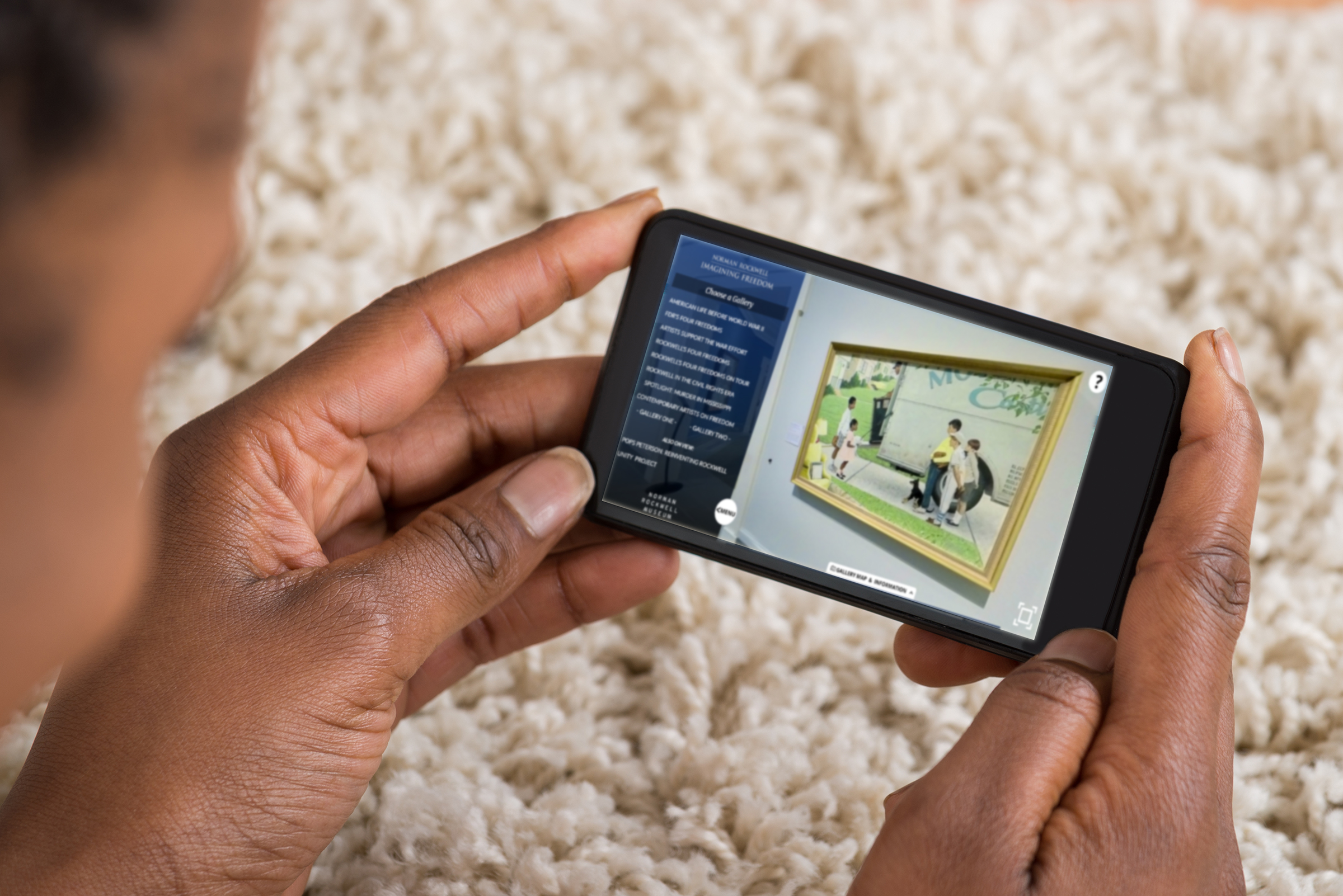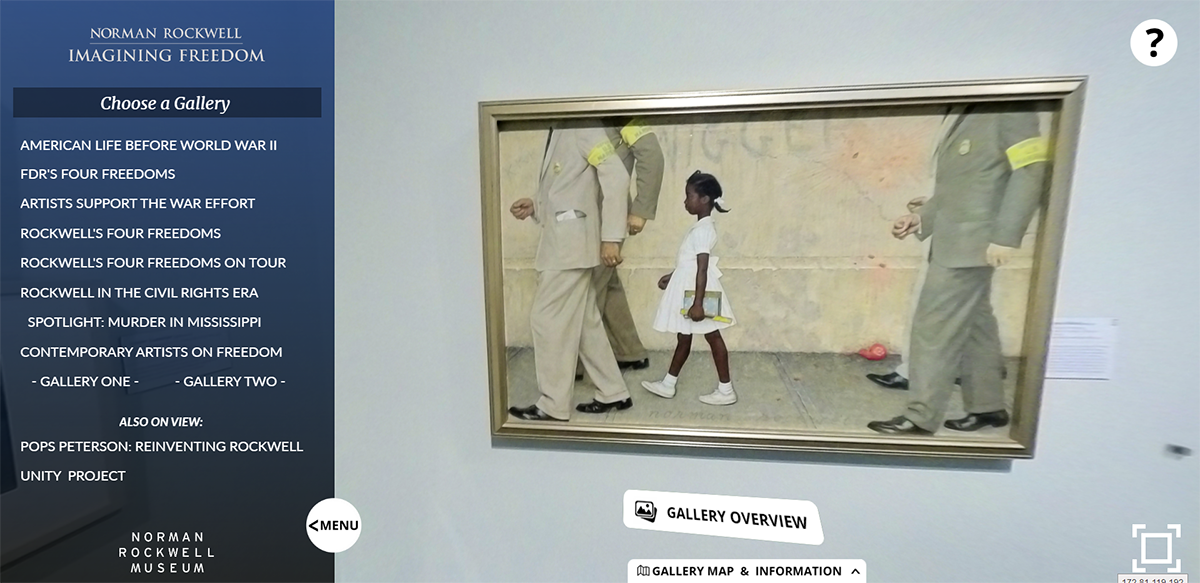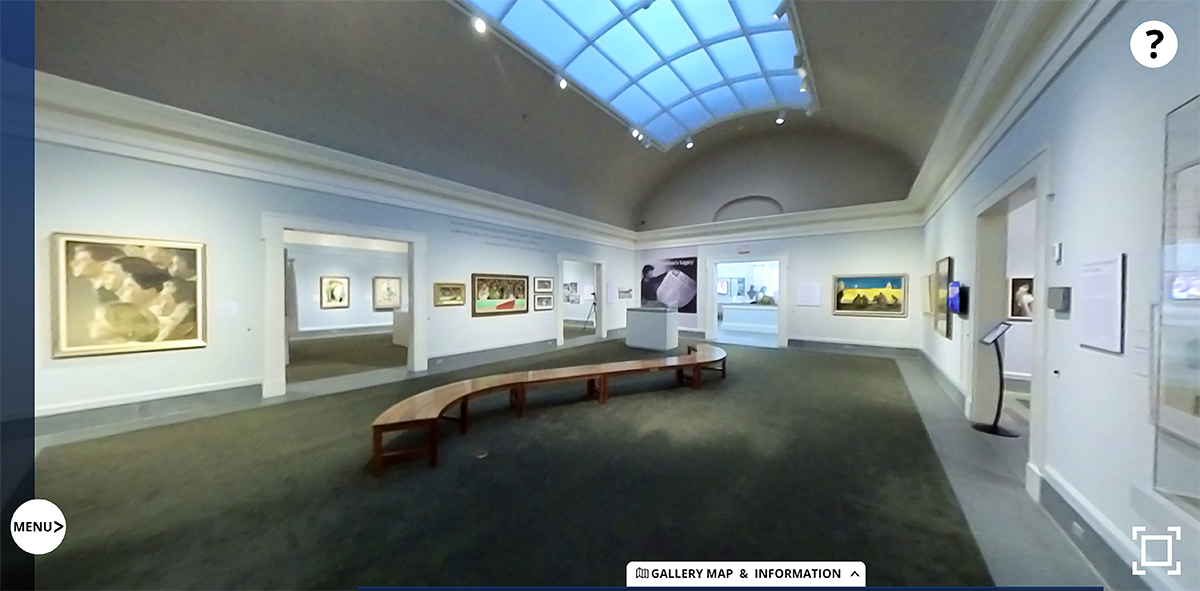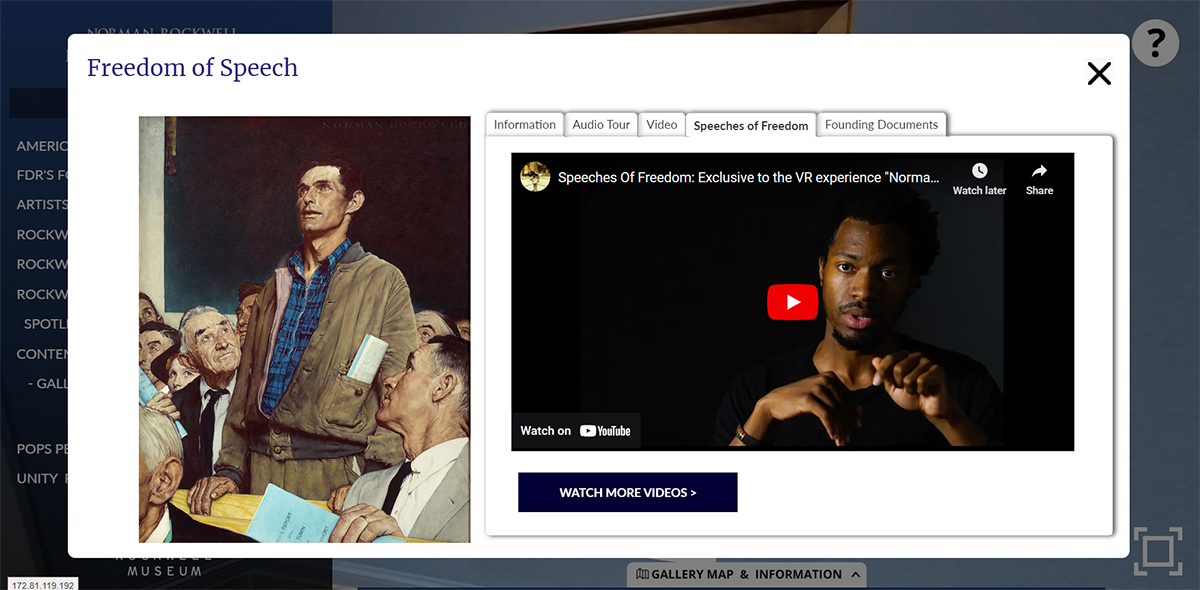
This virtual exhibition is an experience that you access on your computer, mobile device, or virtual reality (VR) headset. Once you purchase it, you can access it at any anytime, anywhere, however many times you would like.
Organized by the Norman Rockwell Museum, Imagining Freedom is a virtual exhibition that explores the history and enduring legacy of President Franklin D. Roosevelt’s concept of the Four Freedoms. The exhibition also highlights the important role played by Norman Rockwell and other American artists in communicating and advancing these universal values.
How it works
- Click on the button above to purchase your admission to the virtual exhibition.
- Upon completing your purchase, we will send you an email confirmation.
- Click on the button in your email confirmation to enter the virtual exhibition.
- The virtual exhibition is accessible in a web browser on your computer, mobile phone, or virtual reality (VR) headset.
- Your purchase of the virtual exhibition is accessible to you at anytime and is not limited to a single visit.
Inspire your students with a virtual field trip!
Give your students a world-class museum experience without ever leaving the classroom. Students can explore the Norman Rockwell: Imagining Freedom through an immersive virtual platform, and teachers can choose from a suite of lessons and activities designed to integrate the experience into classroom curriculum. Each lesson includes a thematic selection of objects, questions to spark guided discussion, in-class activities to promote student engagement, and contextual information to deepen learning.
The Virtual Field Trip is FREE to educators and schools upon request. There is no limit on the amount students or times you access the virtual field trip once you have access to it.
Background on the Exhibition
America had not yet entered World War II in January 1941 when President Roosevelt introduced the idea of Four Freedoms as the core human rights that all people deserve. Americans would need to preserve these freedoms in the face of the threat presented by the rise of fascism: Freedom of Speech, Freedom of Worship, Freedom from Want, and Freedom from Fear.
It would be the job of America’s artists to turn President Roosevelt’s abstract ideas into unforgettable images. Chief among these artists was Norman Rockwell, whose series of paintings became a national sensation, inspiring Americans then and now.
Educators looking for tools to provide their students with meaningful connections to social justice and human rights will find compelling visual and interactive content in the Norman Rockwell Museum’s Virtual Exhibition, “Imagining Freedom”.
Organized chronologically the exhibition begins in Depression era America and explores how Roosevelt’s words and Rockwell’s artworks became inseparable in the public imagination. The exhibition goes on to look at Rockwell’s work of the 1960s. These Civil Rights Era paintings reflect Rockwell’s longstanding commitment to tolerance and equality and show him grappling with the new social issues of the day. The final section of the exhibition asks contemporary artists to consider what freedom and democracy mean to them today.
Imagining Freedom brings together over 250 artworks and objects organized into 10 thematic galleries. This exhibition is based on the exhibition Norman Rockwell: Imagining Freedom that traveled to six cities across the United States of America and France, before returning to the Norman Rockwell Museum. This virtual exhibition provides over 3x the amount of content than what was in the original exhibition. Viewers can explore layers of content drawn from the Museum’s collections and archives, including audio and video, reference photographs and studies, interviews, historical documents, letters and artist’s statements.
We hope that you will enjoy Norman Rockwell Museum’s first-ever virtual exhibition.
IMAGES
Navigating the virtual exhibition is easy. You can press/clip on spots in the gallery to go to that location. You can use the gallery navigation menu on the left side above. And you can use a gallery map to see how the galleries are arranged and you can transport yourself to a location within one of the galleries.













